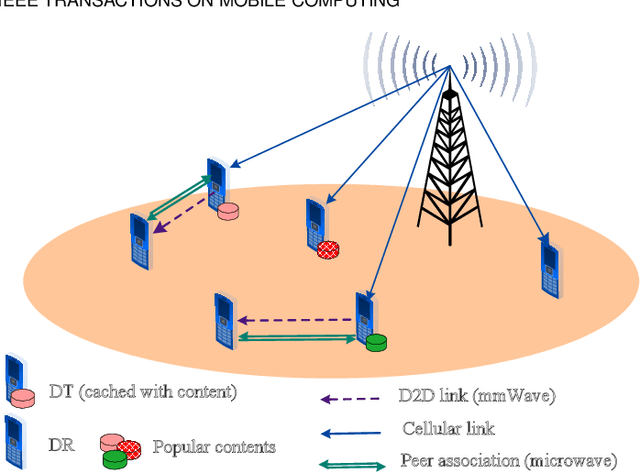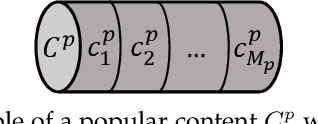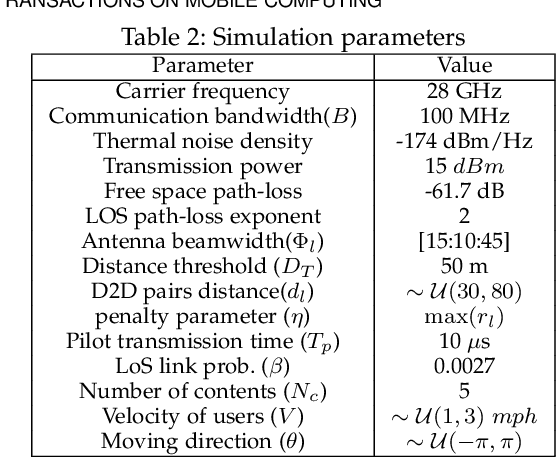Brian Kelley
Enabling Content-Centric Device-to-Device Communication in the Millimeter-Wave Band
Apr 12, 2021



Abstract:The growth in wireless traffic and mobility of devices have congested the core network significantly. This bottleneck, along with spectrum scarcity, made the conventional cellular networks insufficient for the dissemination of large contents. In this paper, we propose a novel scheme that enables efficient initialization of CCN-based D2D networks in the mmWave band through addressing decentralized D2D peer association and antenna beamwidth selection. The proposed scheme considers mmWave characteristics such as directional communication and blockage susceptibility. We propose a heuristic peer association algorithm to associate D2D users using context information, including link stability time and content availability. The performance of the proposed scheme in terms of data throughput and transmission efficiency is evaluated through extensive simulations. Simulation results show that the proposed scheme improves network performance significantly and outperforms other methods in the literature.
Are Learned Molecular Representations Ready For Prime Time?
Apr 02, 2019



Abstract:Advancements in neural machinery have led to a wide range of algorithmic solutions for molecular property prediction. Two classes of models in particular have yielded promising results: neural networks applied to computed molecular fingerprints or expert-crafted descriptors, and graph convolutional neural networks that construct a learned molecular representation by operating on the graph structure of the molecule. However, recent literature has yet to clearly determine which of these two methods is superior when generalizing to new chemical space. Furthermore, prior research has rarely examined these new models in industry research settings in comparison to existing employed models. In this paper, we benchmark models extensively on 19 public and 15 proprietary industrial datasets spanning a wide variety of chemical endpoints. In addition, we introduce a graph convolutional model that consistently outperforms models using fixed molecular descriptors as well as previous graph neural architectures on both public and proprietary datasets. Our empirical findings indicate that while approaches based on these representations have yet to reach the level of experimental reproducibility, our proposed model nevertheless offers significant improvements over models currently used in industrial workflows.
 Add to Chrome
Add to Chrome Add to Firefox
Add to Firefox Add to Edge
Add to Edge